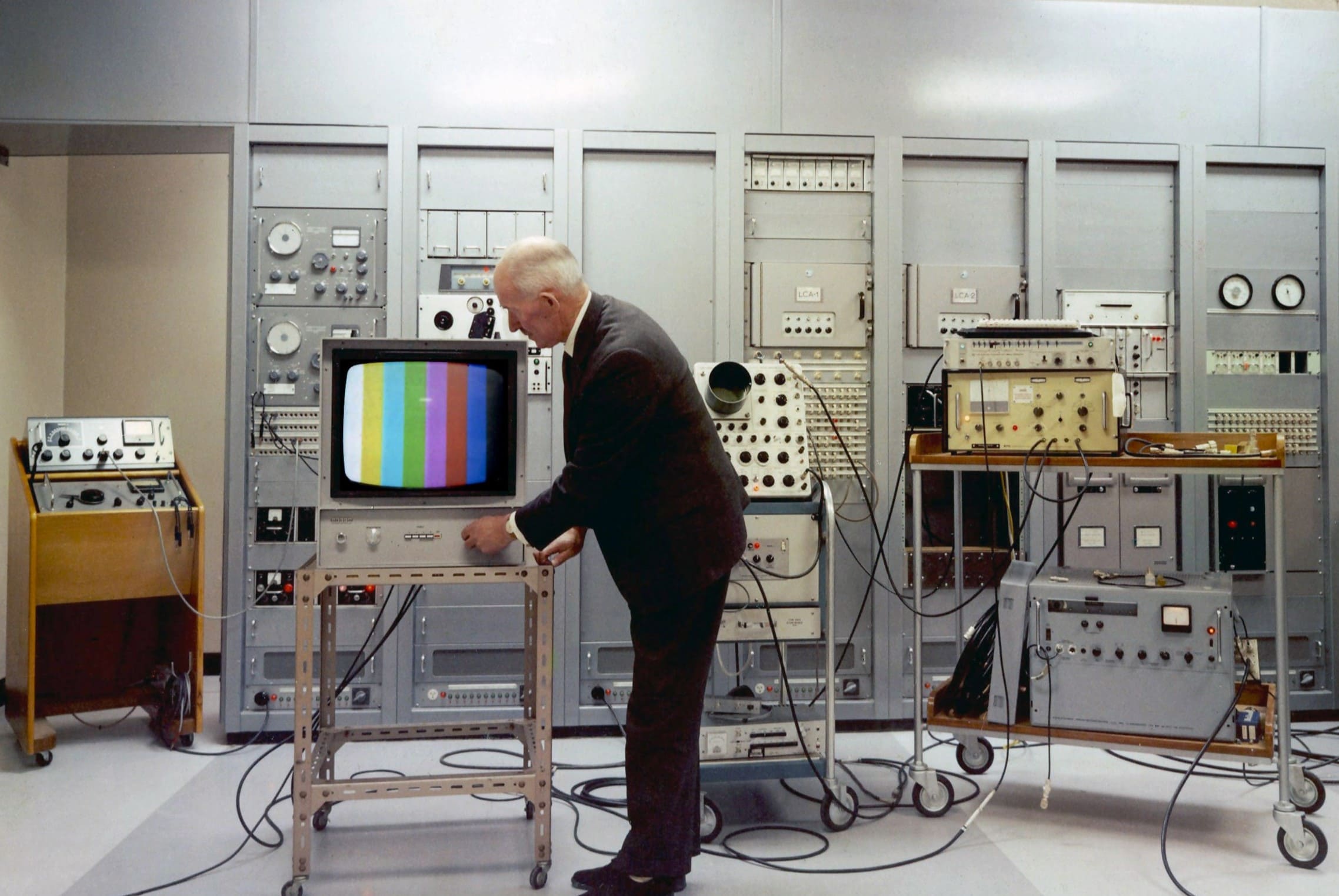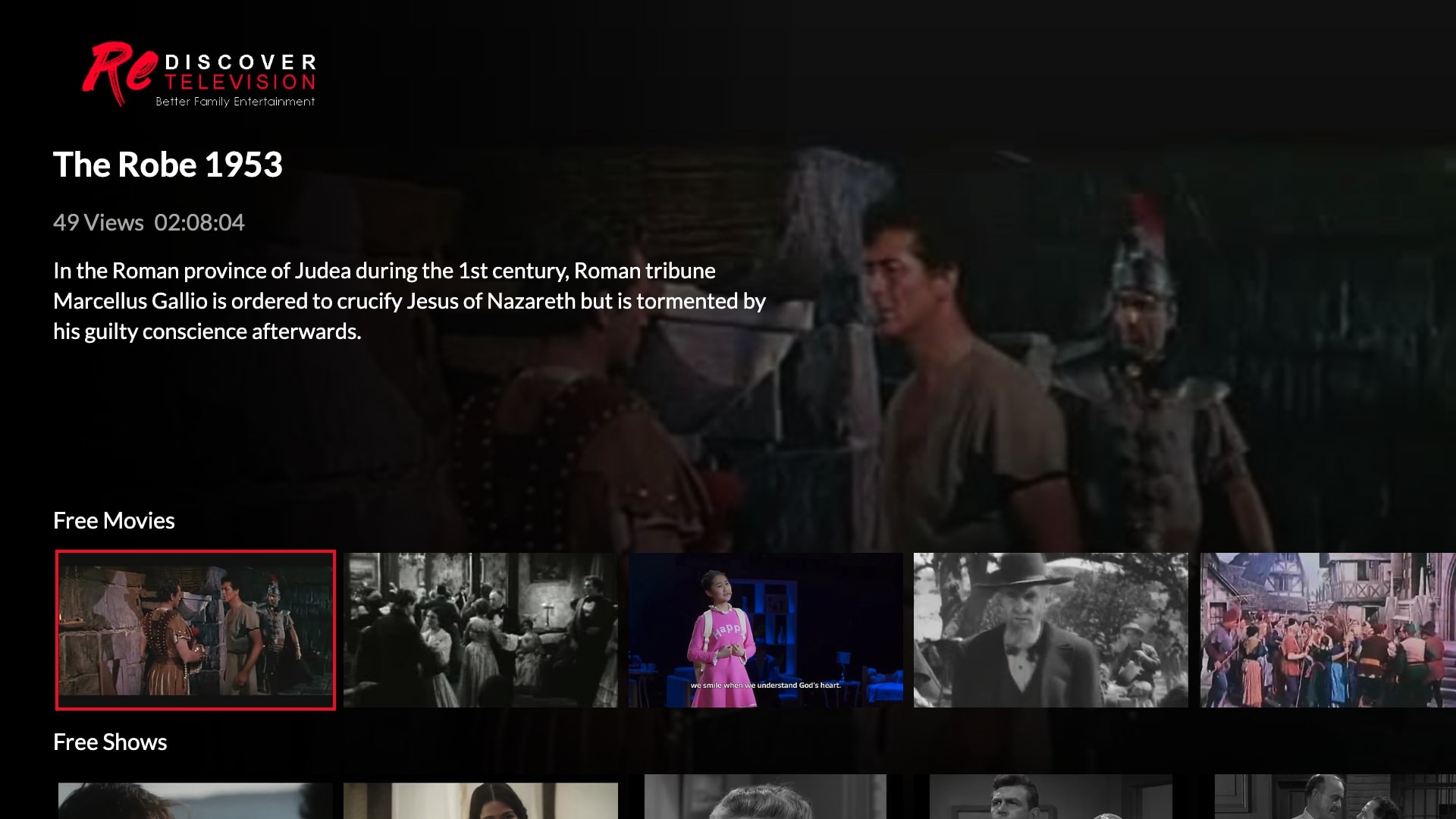Home>Technology>Home Entertainment Systems>Who Created Public Television


Home Entertainment Systems
Who Created Public Television
Modified: January 9, 2024
Discover the history of public television and learn about the visionary behind it. Find out how home entertainment systems played a role in its creation.
(Many of the links in this article redirect to a specific reviewed product. Your purchase of these products through affiliate links helps to generate commission for Storables.com, at no extra cost. Learn more)
Introduction
Welcome to the fascinating world of public television! This comprehensive guide will take you on a journey to discover who created public television and explore its early history, influential figures, and the impact it has had on our society.
Public television has become an integral part of our home entertainment systems, providing a diverse range of educational and entertaining content for viewers of all ages. But have you ever wondered how it all began? Who were the visionaries behind the creation of this unique medium?
In this article, we will delve into the origins of public television, tracing its roots back to the early days of broadcasting. We will explore the birth of educational television, the role of notable organizations such as the Ford Foundation, and the establishment of the Corporation for Public Broadcasting (CPB).
Join us on this enlightening journey as we unravel the story of how public television came to be, and how it has evolved over the years to become a cherished part of our cultural landscape.
Key Takeaways:
- Public television has a rich history rooted in the vision of educators and philanthropic organizations, shaping a diverse and engaging landscape of educational and cultural programming for audiences of all ages.
- The funding and support for public television, from government appropriations to individual donations and corporate sponsorships, have been crucial in sustaining its operations and ensuring the accessibility of high-quality programming.
Read more: Who Created The Light Bulb
Early History of Public Television
The origins of public television can be traced back to the early days of television broadcasting. In the 1940s and 1950s, television was primarily dominated by commercial networks, airing mostly entertainment programs.
However, a group of visionary educators and intellectuals recognized the potential of television as a powerful tool for education and cultural enrichment. They envisioned a platform that would provide high-quality programming aimed at promoting learning, understanding, and social progress.
One of the key figures in the early history of public television was James L. Fisher, who coined the term “educational television” in the 1940s. Fisher believed that television had the potential to revolutionize education by bringing learning directly into people’s homes.
In the late 1950s, the launch of Sputnik, the first artificial satellite, by the Soviet Union sparked a renewed emphasis on education in the United States. This provided further impetus for the development of educational television.
The National Association of Educational Broadcasters (NAEB) played a crucial role in the early development of educational television. Founded in 1929, the NAEB aimed to promote educational broadcasting by facilitating the exchange of programs and ideas among its member stations.
By the 1950s, the NAEB had established a network of educational TV stations across the country. These stations aired instructional programs, lectures, documentaries, and other educational content.
One significant milestone in the early history of public television was the launch of the Educational Television and Radio Center (ETRC) in 1952. The ETRC aimed to coordinate efforts among educational broadcasters and provide support for program development and distribution.
During this time, several universities and colleges also played a pivotal role in the development of educational television. They established their own stations and produced educational programs tailored to the needs of their communities.
Overall, the early history of public television was characterized by the collective efforts of educators, broadcasters, and organizations who recognized the potential of television as a means of educating and enlightening the public. These efforts laid the foundation for the establishment of more formalized structures and institutions dedicated to public broadcasting.
Birth of Educational Television
The birth of educational television marked a significant turning point in the history of broadcasting, as it introduced a new paradigm focused on using television as a tool for learning and enrichment.
As early as the 1940s, pioneers in the field recognized the immense potential of television to educate and engage audiences. They saw it as a way to bring educational content directly into people’s homes, regardless of their geographical location or socioeconomic status.
James L. Fisher, a prominent figure in the field, advocated for the development of educational television as a means of expanding access to education. His work and vision laid the groundwork for the birth of this innovative medium.
In 1951, the Federal Communications Commission (FCC) set aside a portion of the broadcast spectrum for noncommercial, educational use. This opened the doors for the establishment of educational television stations across the United States.
One of the earliest and most influential educational television stations was WGBH in Boston. It went on the air in 1955 and quickly became a pioneer in producing and broadcasting educational content. WGBH’s early programming included instructional series, documentaries, and cultural programs.
Another notable early player in educational television was National Educational Television (NET), which was established in 1952. NET served as a programming distributor, providing educational content to affiliated stations nationwide.
Through the efforts of stations like WGBH and organizations like NET, educational television gained traction and began to attract a wider audience. People saw the potential of television as an educational tool and embraced it as a valuable resource for lifelong learning.
One of the key aspects of educational television was its focus on catering to diverse audiences and addressing a range of educational needs. Programs were developed for different age groups, subjects, and learning styles, ensuring that viewers of all backgrounds could benefit from the educational content on offer.
By the 1960s, educational television had become an integral part of many households. Families, students, and teachers relied on its programs to supplement classroom learning, explore new subjects, and broaden their horizons.
The birth of educational television not only expanded access to education but also fostered a sense of connectedness and community. Viewers could engage in shared learning experiences and participate in the cultural discourse stimulated by educational programming.
In the subsequent decades, educational television continued to evolve with advancements in technology. The advent of cable and satellite television, as well as the internet, provided even greater opportunities for delivering educational content to a wide audience.
The birth of educational television laid the foundation for what would later become the public television we know today. It set the stage for the creation of organizations committed to producing and distributing quality educational programming, as well as securing funding to support its continued growth and impact.
The Role of the Ford Foundation
The Ford Foundation played a pivotal role in shaping the landscape of public television in its early years. Established in 1936 by Edsel and Henry Ford, the foundation dedicated itself to promoting social progress and improving the human condition through grants and initiatives.
In the 1950s, the Ford Foundation recognized the potential of television as a powerful tool for education and cultural enrichment. It saw an opportunity to leverage this medium to reach a broader audience and support the development of educational programming.
One of the major contributions of the Ford Foundation was providing financial support to educational television initiatives. It awarded grants to various organizations and institutions to fund the production of high-quality programs and to support the expansion of educational television stations.
The foundation played a vital role in the establishment and growth of WNET, a public television station in New York City. The Ford Foundation provided significant funding to WNET, helping it become one of the leading educational television stations in the country.
Furthermore, the Ford Foundation collaborated with the Carnegie Corporation of New York and the Rockefeller Foundation to spearhead the development of the National Program Service (NPS). The NPS acted as a distribution and programming service, providing educational television content to stations nationwide.
The Ford Foundation’s support extended beyond financial contributions. It also played an active role in shaping the policies and direction of educational television. The foundation recognized the importance of ensuring the independence and integrity of educational programming.
With this goal in mind, the Ford Foundation provided funds to establish the National Association of Educational Broadcasters (NAEB) Educational Television Facilities Corporation. This organization was responsible for overseeing the allocation of grants, consulting on technical matters, and developing operational guidelines for educational television stations across the country.
The Ford Foundation’s support for public television was not limited to the United States. It recognized the global potential of educational television and extended its funding to international initiatives. The foundation supported efforts to develop educational television in other countries, particularly in Asia, Africa, and Latin America.
Through its financial and strategic support, the Ford Foundation played a significant role in fostering the growth and development of educational television. Its funding helped create innovative programming, establish infrastructure, and promote collaboration among educational television stations and organizations.
The Ford Foundation’s influence and contributions to public television were instrumental in shaping the early years of the medium. Its commitment to social progress and belief in the transformative power of television paved the way for the establishment of public broadcasting and set the stage for its continued evolution and impact.
Establishment of National Educational Television (NET)
The establishment of National Educational Television (NET) was a significant milestone in the growth and development of public television in the United States. NET played a crucial role in coordinating educational programming and ensuring the accessibility of quality content for viewers nationwide.
In 1952, a group of educational television pioneers and stakeholders came together to form NET as a nonprofit organization. The goal was to create a centralized entity that could distribute educational programs to affiliated stations across the country.
NET provided a platform for educational television stations to collaborate and share resources. Its mission was to promote educational programming, raise awareness about the importance of educational content, and serve as a resource for broadcasters and producers.
One of the key aspects of NET’s role was program distribution. It acquired educational programs from various producers and made them available to its member stations, ensuring a consistent supply of high-quality content for educational broadcast.
NET also played an instrumental role in fostering the production of original programming. It commissioned and funded educational programs on a wide range of subjects, from science and history to art and literature. These programs were produced in collaboration with renowned educators, experts, and production companies.
One of the notable successes of NET was the educational program “Mister Rogers’ Neighborhood,” hosted by Fred Rogers. The show, which debuted in 1968 and focused on early childhood education and social-emotional development, became an iconic and beloved staple of public television.
In addition to program distribution and production, NET also facilitated research and development in the field of educational television. It sponsored studies to explore the effectiveness and impact of educational programming, helping to shape best practices in the field.
NET continued to grow and expand its influence over the years. In the 1960s, it collaborated with the Corporation for Public Broadcasting (CPB) and the Public Broadcasting Service (PBS) to promote educational television on a national level.
However, in 1969, NET faced financial difficulties and struggled to secure funding for its operations. This prompted the U.S. Congress to enact the Public Broadcasting Act, which established the CPB as a quasi-governmental entity to provide funding and support to public broadcasting efforts.
With the establishment of the CPB, NET transformed into the Public Broadcasting Service (PBS) in 1970. PBS assumed the role of program distributor while also fostering the production of educational and cultural programming.
While NET had a relatively short lifespan, its legacy and contributions to the development of public television are significant. It laid the groundwork for the establishment of a national public broadcasting system that continues to enrich millions of lives through educational, informative, and entertaining programming.
The Public Broadcasting Act of 1967 created the Corporation for Public Broadcasting, which in turn led to the creation of public television.
Read more: Who Created Bocce Ball?
The Creation of the Public Broadcasting Act
The creation of the Public Broadcasting Act marked a crucial turning point in the history of public television in the United States. Enacted by the U.S. Congress in 1967, the Act laid the foundation for the establishment of the Corporation for Public Broadcasting (CPB) and solidified the commitment to public broadcasting in the country.
Prior to the Public Broadcasting Act, public television faced various challenges, including financial instability and a lack of centralized support. To address these issues, a group of influential individuals and organizations, including the Carnegie Corporation, the Ford Foundation, and the National Educational Television (NET), advocated for the creation of a national public broadcasting system.
The Public Broadcasting Act of 1967 was signed into law by President Lyndon B. Johnson on November 7, 1967. The Act outlined the vision and objectives of public broadcasting, emphasizing its role in providing diverse, educational, and culturally enriching programming to all Americans.
The primary goal of the Act was to establish the CPB, a nonprofit corporation that would serve as the primary source of funding and support for public broadcasting. The CPB was tasked with distributing grants to public broadcasting stations, promoting diversity in programming, and ensuring the independence of public broadcasting from political influence.
One of the key provisions of the Act was the creation of the Public Broadcasting Service (PBS). PBS was designed to be a network of public television stations, providing programming and services to member stations across the country. It succeeded the previous organization, National Educational Television (NET), and took on a more prominent role in coordinating and distributing educational programming.
Furthermore, the Public Broadcasting Act established the Corporation for Public Broadcasting Board of Directors. This board was responsible for overseeing the operations and policies of the CPB, ensuring that public broadcasting adhered to its mission and served the public interest.
The Act also solidified the role of public broadcasting in providing a platform for diverse voices and perspectives. It emphasized the importance of serving underserved communities, fostering local programming, and promoting the use of public broadcasting as an educational tool.
The creation of the Public Broadcasting Act had a profound impact on public television in the United States. It provided a stable and centralized funding source for public broadcasting, allowing stations to produce and acquire high-quality programming that catered to the needs and interests of their communities.
Through the Act, public television gained greater recognition and support from the government and the public. It became a vital component of the American media landscape, offering a alternative to commercial broadcasting and serving as a valuable resource for accessible, educational, and culturally diverse content.
The Public Broadcasting Act stands as a testament to the enduring commitment to public broadcasting in the United States, ensuring that public television continues to educate, inform, and entertain audiences across the nation.
The Establishment of the Corporation for Public Broadcasting (CPB)
The establishment of the Corporation for Public Broadcasting (CPB) was a significant milestone in the development of public broadcasting in the United States. Created as a result of the Public Broadcasting Act of 1967, the CPB played a pivotal role in providing funding and support to public television and radio stations across the country.
The CPB was established as a nonprofit corporation with the primary objective of advancing public broadcasting in the United States. It was tasked with distributing grants to support the production and acquisition of educational and cultural programming, as well as providing financial assistance to public broadcasting stations.
One of the key functions of the CPB was to provide funding to public television and radio stations, helping them sustain their operations and produce high-quality programming. These grants allowed stations to invest in equipment, hire staff, and acquire rights to educational and cultural content.
The CPB also played a vital role in supporting the development of local and national public broadcasting initiatives. It facilitated collaboration among stations and encouraged the exchange of programs and resources. This allowed for the sharing of educational content and the fostering of a sense of community among public broadcasting stations.
Additionally, the CPB had a mandate to promote diversity and inclusion in public broadcasting. It emphasized the importance of serving underserved communities and supporting content that reflected the diverse cultural, ethnic, and socioeconomic backgrounds of the American population.
To ensure the independence and integrity of public broadcasting, the CPB was structured as an independent entity. It operated separate from government control and was governed by a Board of Directors appointed by the President and confirmed by the Senate. This structure helped safeguard public broadcasting from political influence and fostered its commitment to serving the public interest.
Over the years, the CPB has played a crucial role in supporting public broadcasting initiatives and promoting its growth and accessibility. It has facilitated the expansion of public television and radio stations, enabled the production of innovative and educational programs, and advocated for sustainable funding for public broadcasting.
Through its continued funding and support, the CPB has helped public broadcasting thrive and fulfill its mission of providing informative, educational, and culturally enriching content to audiences across the nation. It has become a cornerstone of the American media landscape, offering an alternative to commercial broadcasting and serving as a trusted source of reliable and diverse programming.
The establishment of the CPB through the Public Broadcasting Act of 1967 solidified the commitment to public broadcasting in the United States. It ensured the stability and growth of public television and radio stations, fostering a vibrant and vital public broadcasting system that continues to serve the American public with quality programming.
Early Programs and Initiatives
In its early years, public television embarked on a range of programs and initiatives that laid the foundation for the diverse and educational content we enjoy today.
One of the notable early programs that emerged from educational television was “The French Chef,” hosted by Julia Child. This groundbreaking cooking show premiered in 1963 and introduced American audiences to French cuisine and cooking techniques. It became an instant hit and paved the way for future cooking shows on public television.
Another influential program was “Sesame Street.” Launched in 1969, this children’s educational series combined entertainment and learning, utilizing colorful characters like Big Bird and Elmo to teach basic literacy and numeracy skills. “Sesame Street” revolutionized children’s television and became an iconic and enduring program.
Public television also focused on cultural and artistic programs. “Great Performances,” which premiered in 1972, showcased live performances of music, dance, theater, and opera, allowing audiences to experience the arts from the comfort of their own homes.
Additionally, public television played a crucial role in nurturing documentary filmmaking. Programs like “American Experience” and “Frontline” provided in-depth explorations of historical events, social issues, and current affairs, offering a platform for critical analysis and understanding.
Public television also supported educational initiatives beyond television programming. It launched educational outreach programs, producing educational materials such as textbooks and study guides that complemented the content aired on television.
Furthermore, public television played an important role in educational teleconferencing. It enabled students and educators to participate in interactive lessons and discussions through real-time video connections, closing the gap between classrooms and experts located elsewhere.
Public television’s commitment to local programming was also evident in its early years. Stations produced content that reflected the unique needs and interests of their communities. This included local news and public affairs programs, cultural events coverage, and programs highlighting local history and issues.
The early programs and initiatives of public television demonstrated its dedication to providing educational and culturally enriching content to viewers of all ages. It established public television as a trusted source of reliable and diverse programming, filling the gaps left by commercial networks and catering to the public’s thirst for knowledge and exploration.
These early programs and initiatives set the stage for the future growth and impact of public television. They laid the groundwork for the development of a wide range of educational and entertaining content that continues to engage, inform, and inspire audiences across the nation.
Funding and Support for Public Television
Public television relies on a combination of funding and support from various sources to sustain its operations and produce high-quality programming. From government appropriations to corporate sponsorships and individual donations, these funding avenues play a crucial role in ensuring the continued success and accessibility of public television.
One of the primary sources of funding for public television is the Corporation for Public Broadcasting (CPB). As a quasi-governmental entity established by the Public Broadcasting Act of 1967, the CPB receives federal appropriations to support public broadcasting stations and initiatives across the country. These funds are distributed as grants to public television stations, helping them cover operating costs, produce educational programming, and expand their reach.
In addition to government funding, public television stations also rely on corporate sponsorships and partnerships for financial support. Through corporate underwriting and sponsorship announcements, companies have the opportunity to align their brand with public television’s mission and reach a highly engaged and educated audience. These partnerships provide critical funding for program production and allow public television to maintain its commitment to producing non-commercial and independent content.
Individual donations are another vital source of funding for public television. Viewers who value the unique programming and educational resources provided by public television often contribute through memberships, pledge drives, and fundraising campaigns. These individual contributions not only provide financial support but also serve as a testament to the value and impact of public television in our communities.
Foundations and philanthropic organizations also play a significant role in supporting public television. Organizations such as the Ford Foundation, the John D. and Catherine T. MacArthur Foundation, and the Bill & Melinda Gates Foundation have provided substantial grants to public broadcasting stations, supporting program development, technological advancements, and community engagement initiatives. These contributions have helped public television expand its reach and deepen its impact.
State and local government funding also plays a part in supporting public television stations. Some states designate funds specifically for public broadcasting, recognizing the value it brings to education, culture, and public discourse. Local governments may also allocate resources to support local public television stations and their community-based programs.
Public television stations have also embraced innovative revenue-generating strategies to supplement their funding. These include licensing and distribution of programs to international markets, sales of educational materials and merchandise, corporate underwriting of specific programs, and leveraging digital platforms for audience engagement and monetization.
Through a combination of government appropriations, corporate sponsorships, individual contributions, foundation support, and innovative revenue streams, public television has been able to sustain its operations and provide educational and engaging content to audiences across the nation. This diverse mix of funding sources ensures the independence, quality, and accessibility of public television, allowing it to fulfill its mission of serving the public interest and promoting lifelong learning.
Read more: Who Created Ultimate Frisbee?
Conclusion
Public television has emerged as a vital and cherished part of our home entertainment systems, providing educational, informative, and culturally enriching content to viewers of all ages. The origins and development of public television have been a testament to the dedication and vision of educators, broadcasters, philanthropic organizations, and government entities.
From its early days as an idea to the establishment of educational television and the creation of the Corporation for Public Broadcasting (CPB), public television has undergone a remarkable journey. It has evolved from a novel concept to a trusted source of quality programming that serves the public interest and fosters lifelong learning.
The early programs and initiatives of public television, such as “Sesame Street,” “The French Chef,” and a variety of cultural and documentary programs, brought educational content into households across the nation. These programs laid the groundwork for the diverse and engaging programming that continues to captivate and educate viewers today.
Crucially, the funding and support for public television have been instrumental in its growth and sustainability. Through government appropriations, corporate sponsorships, individual donations, and foundation grants, public television has secured the resources needed to produce and distribute valuable educational content that impacts individuals and communities.
Public television has not only enriched the lives of its viewers but has also provided a platform for diverse voices, inclusive programming, and local community engagement. It has bridged gaps in educational access, fostered cultural understanding, and stimulated public discourse on important issues.
As public television continues to navigate the changing media landscape, it faces new challenges and opportunities. Digital advancements, streaming platforms, and interactive technologies provide exciting avenues for engagement and audience reach. Public television has embraced these innovations while staying true to its core mission of serving the public interest.
In conclusion, public television stands as a testament to the power of educational programming and the importance of accessible and diverse media. Its origins and development have been shaped by a collective commitment to knowledge, learning, and social progress. Public television serves as a valuable resource, informing, entertaining, and inspiring audiences of all backgrounds, ages, and interests.
As we look to the future, we can be confident that public television will continue to evolve and adapt, remaining a trusted source of quality content. Whether through television broadcasts, online platforms, or innovative multimedia experiences, public television will continue to enrich our lives, spark our curiosity, and ignite our desire to explore the world around us.
Frequently Asked Questions about Who Created Public Television
Was this page helpful?
At Storables.com, we guarantee accurate and reliable information. Our content, validated by Expert Board Contributors, is crafted following stringent Editorial Policies. We're committed to providing you with well-researched, expert-backed insights for all your informational needs.














0 thoughts on “Who Created Public Television”